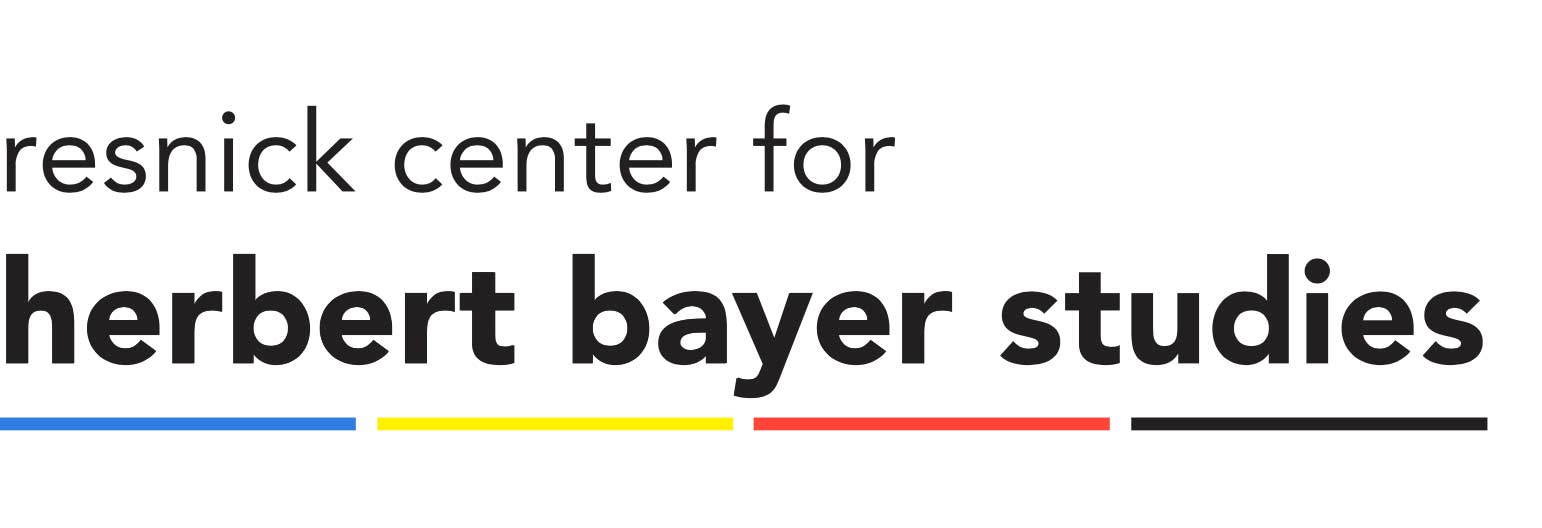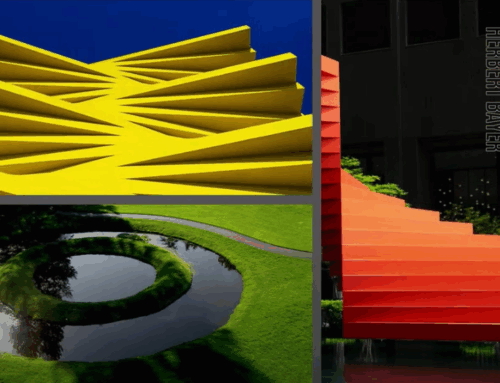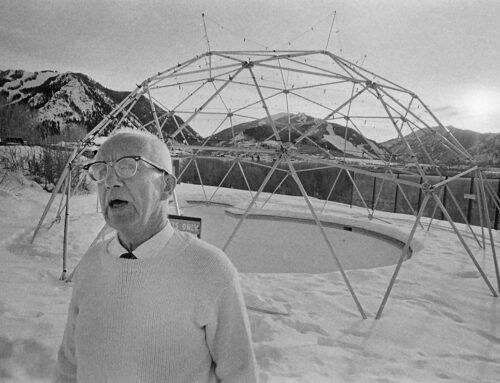
View from my Room, Darmstadt
Apartment buildings crowd an urban landscape; chimneys emit wisps of smoke into the night sky. Rendered in charcoal on paper in 1923, View from my Room, Darmstadt is the stuff of film noir—the drawing could easily pass for a Fritz Lang movie poster.
Herbert Bayer (1900–1985) was a prolific artist and designer who—after studying at the Bauhaus in the 1920s and fleeing Europe in 1938—subsequently transposed the iconic German art movement onto a new American landscape. Along the way, he catalyzed a postwar modernist movement in the Rockies and triggered the cultural rejuvenation of a sleepy silver mining town.
While many historians focus on Bayer’s transition from Europe to Aspen, View from my Room, Darmstadt points to the artist’s earliest influences. After the First World War, Bayer left his provincial Austrian Alps for Germany. But before arriving at the legendary Bauhaus, he studied at the Darmstadt Artist’s Colony—a training that provided Bayer with a new modernist sensibility in fine and applied arts.
During the early 1920s, Bayer’s understanding of perspective and form matured. And as View from my Room suggests, Darmstadt—a rising industrial center and vital hub for the Jugendstil movement—was a thoroughly modern place. The influences of early twentieth-century artistic innovation are unmistakable in Bayer’s drawing, particularly the shifting geometries of Cubism and the moody undertones of German Expressionism. Drawn two years after Bayer lived in Darmstadt, the work appears as a dream—and serves as a blueprint for the signature geometric style the artist would subsequently develop.
This article was originally published in local Magazine on June 10, 2022 by James Merle Thomas.
more



